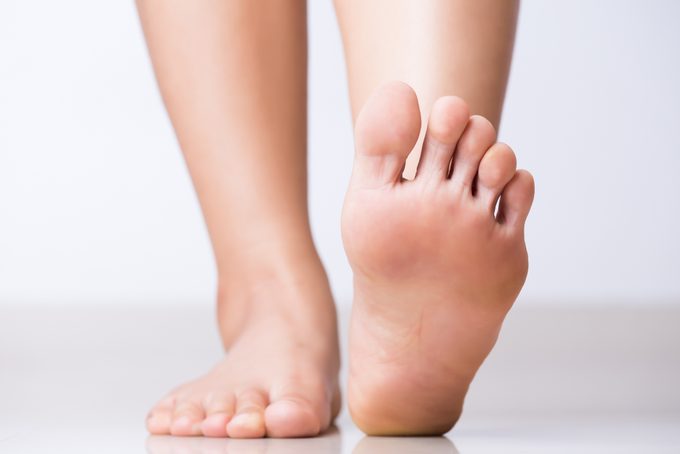Foot Care Advice for People With Diabetes
Updated: Oct. 12, 2022
You asked, we answered. Check out our podiatrists' tips on diabetic foot care, from how to prevent nerve damage to clipping diabetic toenails.
When you’re living with diabetes, what you can’t feel can still hurt you. This is especially true when it comes to your feet and the nerve damage you may experience. If you’ve just learned you have type 2 diabetes, you should arrange to meet with a podiatrist and talk about the importance of foot care, say foot experts Erika M. Schwartz, DPM, a spokesperson for the American Podiatric Medical Association and David G. Armstrong, DPM, a podiatric surgeon and professor of surgery at the University of Southern California Keck School of Medicine in Los Angeles.
Here, these foot doctors help you sidestep the foot pain complications of diabetes by answering your most common questions on diabetic foot care, from how to prevent nerve damage to why you should let someone else trim your toenails.
Q. When it comes to foot care, what is the first thing someone just diagnosed with diabetes should know?
Besides building a relationship with a podiatrist, a person with diabetes should know that most ulcerations and amputations are preventable, but proper foot care is essential. (Learn how diabetic foot ulcers start.)
Q. What is actually happening when you lose sensation in your feet?
Neuropathy describes the loss of sensation that arises from nerve damage. Over time, diabetes leads to what’s called a “loss of protective sensation,” or LOPS and because it occurs so slowly, many people don’t notice it. According to the National Institute of Neurological Disorders and Stroke, about 60 to 70 percent of people with diabetes have some form of neuropathy, which can occur in other organ systems, not just the feet. (Here are the best shoes for neuropathy.)
Q. How can I protect myself from nerve damage?
Neuropathies are the result of several factors, the largest being exposure to high blood glucose levels. Keeping blood sugar levels low is the best protection against nerve damage in people with diabetes. “There is some compelling emerging evidence that controlling high lipid levels may reduce the progression of neuropathy, too,” says Dr. Armstrong.
Q. Do feet need to be examined every day?
Examining your feet should be as regular a habit as combing your hair or brushing your teeth. Dr. Armstrong recommends replacing your bathroom scale with a mirrored one. Red flags for foot problems include any swelling or redness, including new areas of discoloration and ingrown diabetic toenails. Any break in the skin is reason to contact your podiatrist immediately.
Q. Why can’t you cut diabetic toenails?
If you have neuropathy or symptoms of vascular disease, you should leave clipping your diabetic toenails to your podiatrist. If you are cutting your own toenails, cut straight across the top of the toenail, leaving part of the whiter nail plate, advises Dr. Schwartz who adds, “If you are unable to feel a cut, or don’t have the blood supply required to heal a cut, you likely shouldn’t be cutting your own toenails.” Read what this woman has to say about living with diabetic foot problems.

Diabetic foot care tips
- Use caution when shoe shopping—particularly in warmer weather. Neuropathy requires more protective footwear than a flip flop or sandal. Patients with nerve damage should avoid wearing sandals with straps that weave between the toes, or those that place extra pressure against the foot. (Experts recommend these sandals for diabetic women.)
- Know the dangers of going barefoot. If you’ve lost protective sensation in your feet you’re better off keeping them in shoes—even when you’re indoors. “Unfortunately,” Dr. Armstrong says, “up to 85 percent of steps are taken in and around the home—and most of those are taken barefoot.” Keep doctor-approved slippers or shoes in several places throughout your home. (Here are the best diabetic shoes for women.)
- Work with your endocrinologist to regulate your blood glucose levels. Checking your blood sugar levels at home as instructed will help you to make better choices throughout the day. (Here’s how to maintain healthy blood sugar levels.)
- Before you slip your foot into a shoe, check inside for foreign objects. It is a scary reality, but more than a few patients have needed to undergo an amputation brought on by ulcerations from items inside footwear. (Here’s what you need to know about diabetic blisters.)
- Slip on some white socks. An open sore on the foot may be easier to spot when you see drainage on the sock, suggests Dr. Schwartz.


















